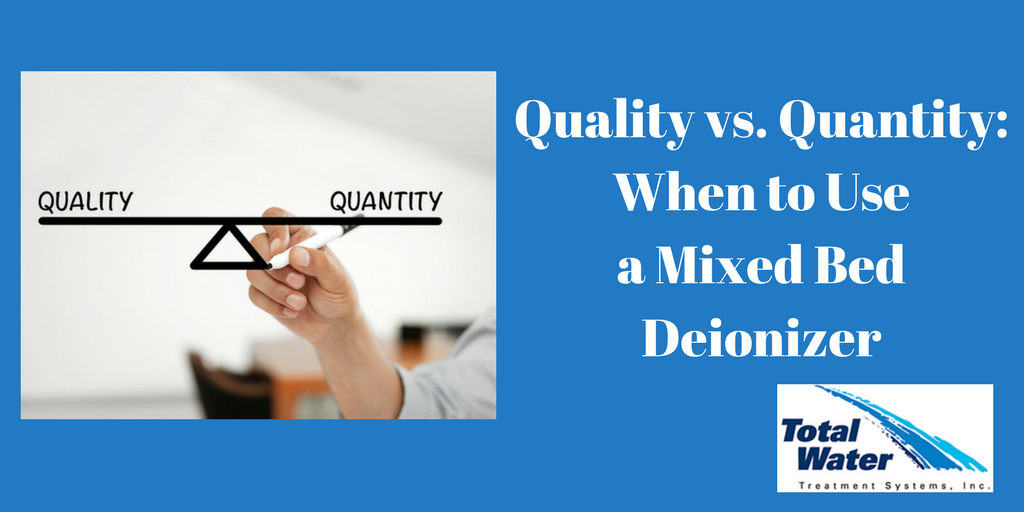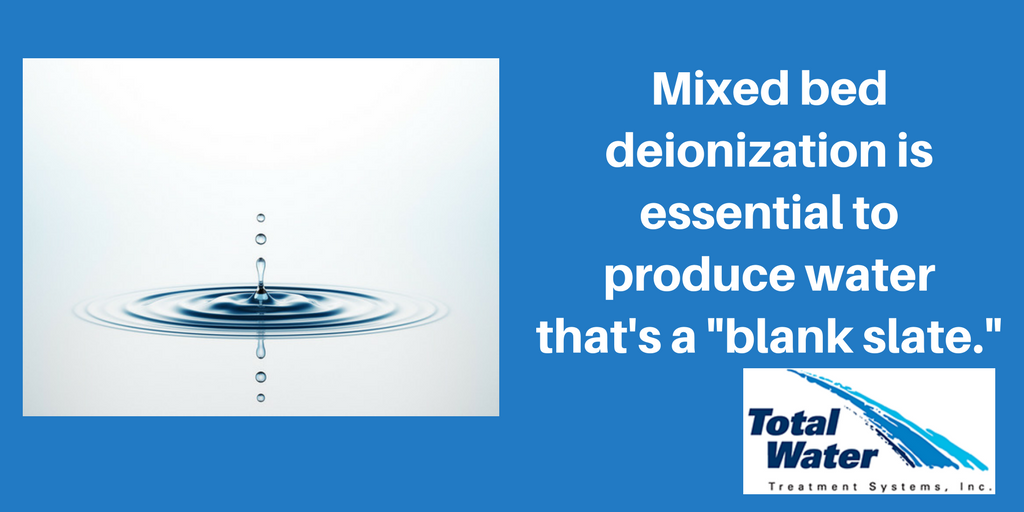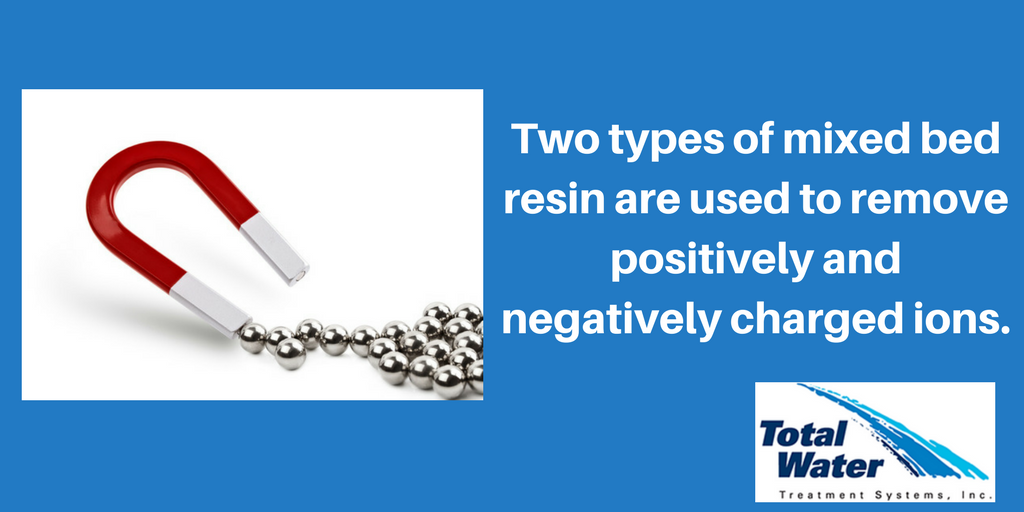A mixed bed deionizer provides you with the highest quality deionized water at 18.2 Megohm. But what should you do if you need large quantities of water?
The solution lies in how your deionized water system is configured. You can achieve both a high quality and a high quantity of deionized water through the use of two bed and mixed bed deionized water systems.
What is Mixed Bed Deionization?
The goal of deionization is to remove ionic dissolved salts and minerals from the water. By passing water through ion exchange resin, these sediments are removed from the water, effectively rendering it highly purified and a blank slate.
To produce the high quality purified water with the maximum resistivity, mixed bed deionization is used, which should produce water quality of 16 – 18 megohm.
What Type of Resin is Used in a Mixed Bed Deionizer?
There are two types of mixed bed di resin – cation resin and anion resin. The cation resin will attract positively charged ions, such as calcium, sodium, magnesium, iron, manganese and potassium. The anion resin will remove negatively charged ions, such as sulfates, chlorides, carbonates, bicarbonates, nitrates and silica.
When is a Dual Bed System Used?
In cases where higher quantities of water are needed, a dual bed di water system may be configured. In the dual bed configuration, the resins are separated based on the type of minerals they attract.
The first tank is filled with cation resin, a negatively charged resin bead used to attract positively charged hydrogen ions (H+). Water produced from this tank is virtually absent of every positively charged ion except for hydrogen, and has a very low acidic pH level (2-2.5).
The second tank is filled with anion resin, a positively charged resin bead used to attract the negatively charged hydroxyl ions (OH-). Water produced from this tank is virtually absent of every negatively charged ion except for hydroxyl, and has a very high pH level (9 – 9.5).
When is a Multiple Tank Deionized Water System Used?
The configuration of the tanks is based entirely on the quantity of water that needs to be produced. Here are some examples of tank configurations:
| Quantity of water | Tank configuration |
| 50 gallons | Mixed bed |
| 200 gallons | Mixed bed with dual bed |
| 400 gallons | 2 mixed tanks 2 cation tanks, 3 anion tanks |
| 1000 gallons | Reverse osmosis system before mixed tank, dual tank configuration |
As the quantity of deionized water continues to increase, you can move to tanks with 20 to 30 cubic feet of resin. Power plants and manufacturing facilities typically reach these levels.
The Resin Bed Triggers the Deionization Process
There are three different types of deionization, and the types of resin used will determine the water quality. It’s detailed in this post on choosing the right high purity di resin, but here’s a quick breakdown:
Weak base deionization: Using a strong acid cation and a weak base anion, the lowest quality of di water. (Resistivity of 50,000 ohms.) Used in spot-free car washes or window/glass cleaning.
Strong base deionization: Using a strong acid cation and a strong base anion, creates a mid-range quality di water. (Resistivity 200,000 ohms.) Used in manufacturing that doesn’t require the highest quality purified water.
Mixed bed deionization: Using a 40/60 ratio of strong acid cation to strong base anion. (Resistivity of more than 16 megohms, or 16 million ohms.) Used in medical applications, research facilities, laboratories, biotech manufacturing, pharmaceutical and electronics.
Steps to Determining Your Mixed Bed Demineralizer Configuration
To determine the proper configuration of your industrial water system, a purified water engineer will factor in your quality and quantity outputs. You start with the specific water standard you?re trying to meet, and then configure the mixed bed, dual bed, or multiple bed system based on the final result.
The configuration is critical, but be sure to also check that the resin is maintained and exchanged properly. Look for an upcoming post on that topic.
We’ll do more than give you a quote we’ll visit your site to analyze your industrial water needs.




Follow Us